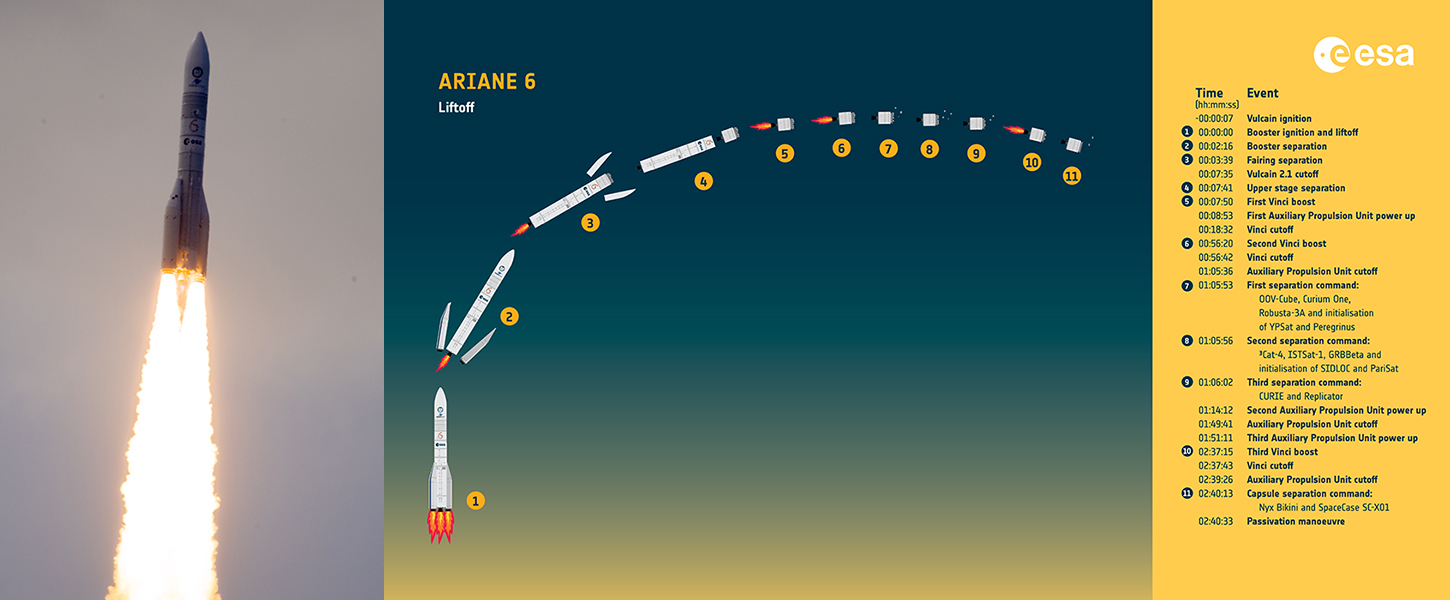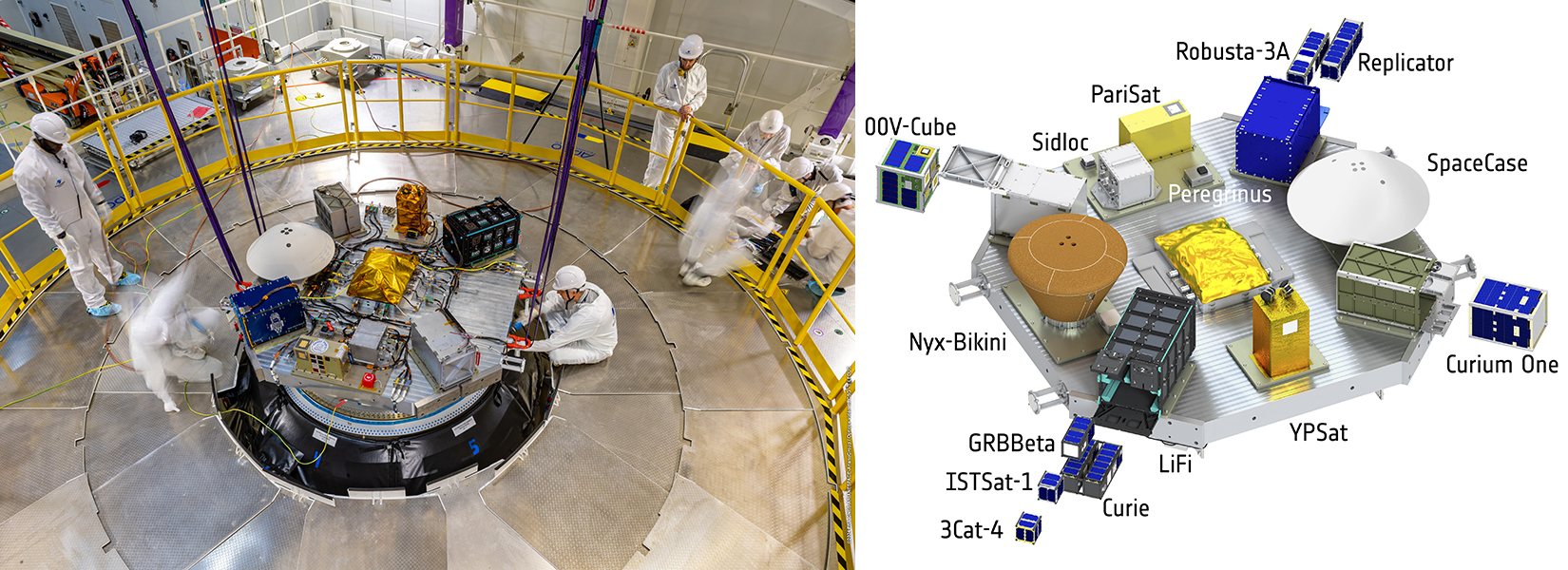OOV-Cube Developed by Professor Zizung Yoon Finds Climactic Success After Launch
- 2024-07-25

OOV-CUBE, a
nanosatellite developed by Korea Aerospace University (KAU) Professor Zizung
Yoon (Dept. of Smart Drone Engineering) succeeded its first transmission after
six days of launch via Ariane 6, a rocket of the European Space Agency (ESA).
On July 9 at 4
PM (local time; July 10 at 4 AM KST), OOV-CUBE was launched into space at the
Guiana Space Centre in Kourou, French Guiana, loaded onto the Ariane 6,
Europe’s next-generation launch vehicle. Ariane 6, a new rocket that the ESA
showcased as an ambitious project after 28 years, included NASA’s nanosatellite
and nine other satellites as well as OOV-Cube.
The satellites
successfully separated themselves from the top of the projectile one hour and
six minutes after launch and entered the target orbit. However, the research
team had to anxiously wait as they took a few more days to return their
transmissions to Earth. The reason was that batteries inside the satellites
became discharged due to the delay in the launch of Ariane 6, which prevented
them from operating immediately after stabilizing their orbit, taking several
more days to recharge in orbit using their solar cells. OOV-Cube, a cube-shaped satellite,
required even more time to recharge as it had a relatively smaller solar panel
area. Despite the difficulties, the satellite finally returned its first
transmission with the Technical University of Berlin (TU Berlin) ground station
on July 15 at 6 PM (local time; July 16 at 1 AM KST), delivering the news of
its successful operation.

Professor Yoon
and the research team plan to run a detailed checkup on the satellite’s status
for a week or two and carry out its mission of examining advanced technologies
in space. This includes demonstrating a highly efficient communication protocol
where the ground IoT device communicates directly with the satellite and a data
processing assessment through the AI neural network e x e cuted within the
satellite’s onboard computer. The accomplishment of OOV-Cube’s mission is
expected to solidify Korea’s position in the European space market by verifying the nanosatellite platform
technology that harnesses high reliability at a low cost and expand the
opportunities to carry out additional technology examination missions in the
future. Also, the team has prospects of demonstrating the core technology
required for IoT services, the elements that will play a crucial role in the 6G
telecommunications market, which will bring the convergence of ground and
satellite communications, as well as enabling environment monitoring by connecting
countless mobile IoT devices and the satellite constellation by demonstrating
ultra-low-power IoT communication technology.
The satellite
control centers at KAU and TU Berlin will be responsible for the satellite’s
operations. As a head researcher at TU Berlin, Professor Yoon developed and
designed “TUBiX10,” the satellite platform utilized by OOV-CUBE. From 2018 to
2020, five satellites were created using the TUBiX10 platform to successfully
operate in a low-orbit environment.
OOV-CUBE took
the honor of winning the contest in 2022 hosted by the ESA before the first
flight of its new projectile Ariane 6, and thus earned the opportunity to
verify its advanced technology in space without any launching costs. Professor
Yoon stated, “There were risks, as succeeding in the first launch of a
satellite is far from easy. However, I put myself to the challenge because I
was confident I could develop and produce the satellite faster and more
efficiently. I am grateful to the ESA for allowing me to launch the satellite and the Korea
Aerospace University for establishing the satellite’s ground station within the
school area as a part of the Convergence and Open Sharing System’s
next-generation communication program. I will focus on the international
cooperation in aerospace areas between KAU and European parties.”
Based on
OOV-Cube’s achievement, Professor Yoon plans to push forward in his development
of the IoT technology-loaded constellation satellite.

